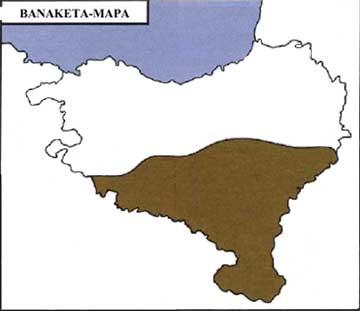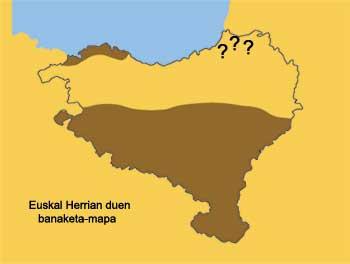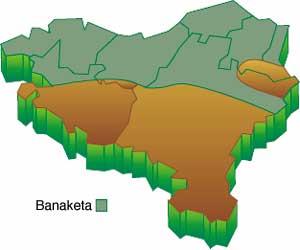Gardatxo, giant river lizard
1991/06/01 Aihartza, Joxerra Iturria: Elhuyar aldizkaria
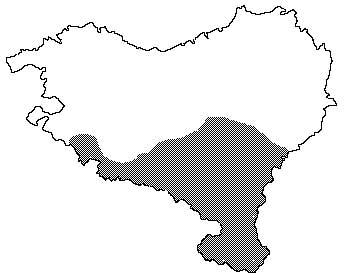
On one of those days when the Sun calcins the shores, by taking a short tour of the bushes of the Ribera area, more than one can hear the unexpected bustle of the unknown beast fleeing among brambles. The noise caused by the race steps and the drag of the torso can be misled and even worry the mountaineer who does not know the refugee animal. On the contrary, the inhabitants of southern Navarre and Alava know perfectly the gardita, the largest saurian in Europe and the giant relative of the green lizard.
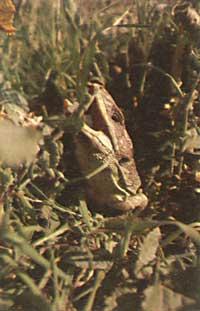
In fact, the heron measures 20 cm from end to year and can have a total length of 60 cm and above. In general, its anatomy is similar to that of the other lizards, but it has a robust body and excellent head compared to the rest of the lizards of Euskal Herria, and the hard garments of hard scales remind us of their giant Saurian ancestors. Among the most noteworthy features of the species are three: on the one hand, it has pronounced blue scars on the ribs of the scaly skin colored with vivid green; on the other, the occipital scales, almost triangular, located on the top of the robust head, is more extensive than the frontal scales; and finally, the abdominal scales are organized in 10 longitudinal rows
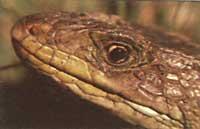

The heron is a quiet lizard and warmer, so he likes to lie on stones or tree trunks where the sun hits hard. In these cases you can spend long hours enjoying the rich rays of the sun and are calm unless the enemy approaches. However, when he discovers the danger, he opens his eyes and leaves at full speed between brambles or stones, without worrying about the hustle and bustle he brings in the flight. Therefore, the heron lives in dry and sunny places, in scrubland, clean forests, or in places where there is already stony ground. As for food, omnivorous, it must be said that it has a fairly diverse diet. Among his hunting pieces are insects, worms and other invertebrates, although he can also eat some rodents, small birds and eggs. He also likes sweet fruits.
The heron's zeal usually takes place between mid-April and June, and reproduction occurs as in most lacerids: the male captures the female with teeth, performing internal fertilization through copulation. The female lays between 6 and 15 eggs, deposited on the ground or under the stone, and like most reptiles and amphibians, these will be at the mercy of fate, without any attention or responsibility from the parents. Babies born at three months will have to adapt to themselves, looking for food and facing all kinds of risks.
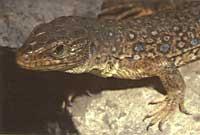
As for its distribution, the Gardita is a Mediterranean species that inhabits the Iberian Peninsula, southern France, northwest Italy and northern Africa. In Euskal Herria, for its part, it has been located on the Alava shore and only in the south of Navarre. According to this distribution, the heron occupies excessively arid habitats for the green lizard, and in concurrent regions the green lizard ( Lacerta viridis) inhabits in the most humid and fresh places of the area, leaving the driest corners under the nape.

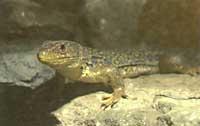
Unfortunately, as has happened with many other species, the heron has become in recent years an increasingly inauditable and minority species, and some authors consider that the state of the populations of this species is already critical. And not as a consequence of the activities of eagles and other predators that are their natural enemies. On the contrary, man has long hunted the heron for its tender, white and appreciated flesh.
On the other hand, agriculture has almost completely absorbed the bushes and other natural spaces in which this animal inhabits. Consequently, the populations of gardditxas are forced to live isolated in islands of natural vegetation that still remain and in few hedges of shrubs abandoned between extensive agricultural fields. Therefore, do not forget that the protection of these means is also mandatory for garditxoa and many other machines live in it.
Technical information: GARDATXO |
SPECIES
|

2. Gardatxo; dorsal vision of the mind.
3. Green lizard; abdominal scales.
4th Gardatxo; abdominal scales.

Gai honi buruzko eduki gehiago
Elhuyarrek garatutako teknologia




